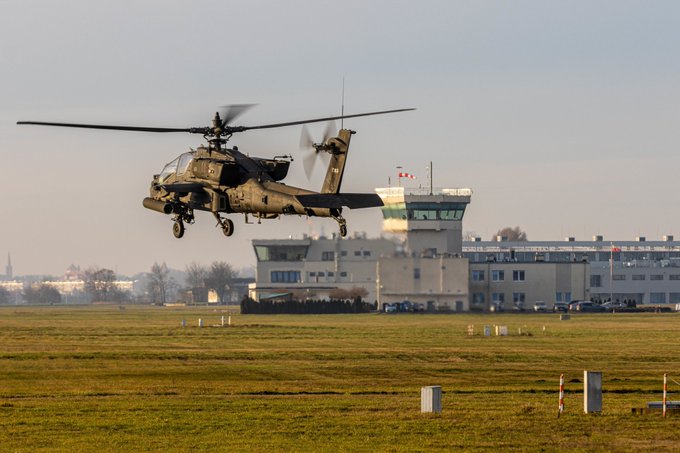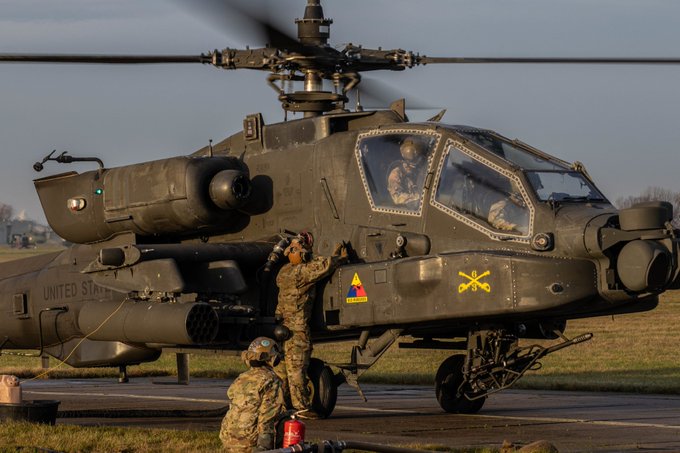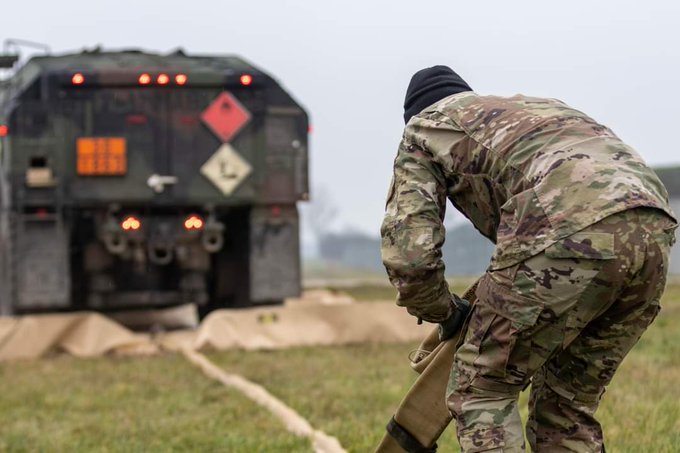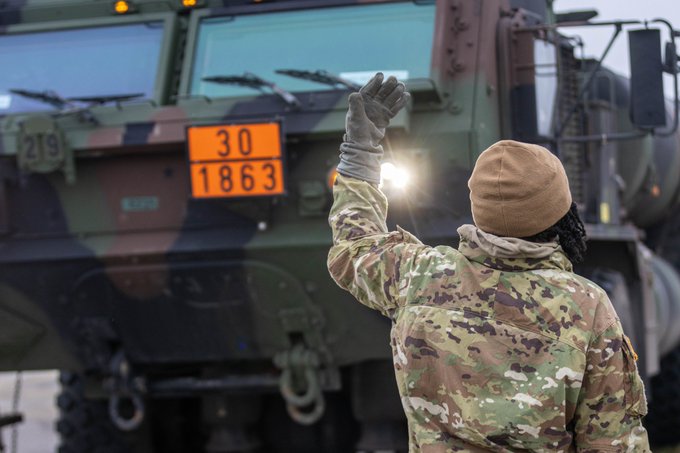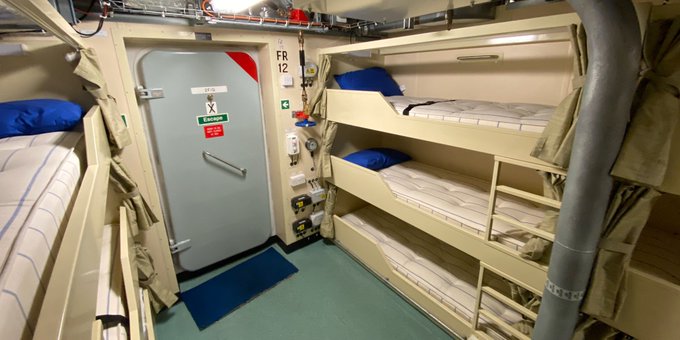From being squashed inside a hunk of metal filled with exhaust fumes to soaring through the skies at sub-zero temperatures, get your helmet on and let’s see what life was really like inside military vehicles throughout history.
British Mark V Tank
The First World War triggered a huge number of changes in how battles are fought. Arguably the most important was the invention of the battle tank, and one of the most influential tanks was the British Mark V.
First deployed in 1918, while previous models required a Driver, two Gearmen, and a Commander just to steer, the Mark V only needed one person, making it significantly easier to operate. That said, there was still a crew of eight. A commander, a driver, a secondary driver and an assortment of signalers, observers, gunners and mechanics.
This made it a tight fit, but considering the Mark V was modified to be 6 feet longer than the Mark IV, at 32ft-5”, things could’ve been worse. Plus, it was slightly faster, at a blinding 4.6mph rather than 3.6. One thing that definitely wasn’t as good as earlier models though, was the air quality.In the Mark IV, the tank’s radiator, which is responsible for cooling the engine, would draw air from inside the tank, and in doing so keep the interior air moving and ventilate the vehicle. In the Mark V however, air was instead pulled from outside the tank and went through a duct, through the radiator, and out of the vehicle again.

This meant there was no air flow where the crew were stationed, which as well as making it stiflingly hot meant fumes from the radiator and gunfire built up quickly. Conditions were so bad that soldiers often got seriously ill while operating the vehicle and even passed out from carbon monoxide poisoning. Still, this slow, cramped, carbon monoxide spewing machine played an essential role in the outcome of the First World War.
F-16 Fighting Falcon Jet
The General Dynamics F-16 Fighting Falcon is one of the most famous fighter jets in the world, capable of achieving a jaw dropping top speed of 1,345mph. But before hopping inside the cockpit, every pilot’s got to dress the part. F-16 pilots wear Nomex suits, a durable flame-resistant fabric, in case of accident.

On top of this they wear an antigravity suit and an oxygen mask, so they can still breathe whatever the altitude. But what’s an anti-gravity suit? Well, the average F-16 pilot is constantly dealing with the phenomenal physical pressure of flying at such intense speeds. A current F-16 is capable of withstanding up to 9 Gs, which is 9 times the force of gravity. You can’t survive that!Without the right equipment, all that pressure will push against the heart and prevent it from pumping blood up to your brain. Then, you’ll pass out. Enter the antigravity suit. Despite the fancy name, it’s essentially a pair of tight pants with inflatable bladders on them. When under increased Gs, these blow up and constrict blood-flow to the pilot’s legs and abdomen, stopping it from draining away from the brain. Pretty clever!

So, once inside the cockpit a pilot dons their oxygen mask and gets ready for take-off. Crucial information about their mission is provided on a funky Heads-up Display projected onto the windshield, and off they go. Considering missions have been known to last as long as 16 hours, this is no job for the weak of heart, in more ways than one.
Zeppelin Airship
Anyone who has a paralyzing fear of heights and sudden explosions will think that the Zeppelin war balloon has to be the worst idea for a military vehicle ever created. First manufactured as civilian cruisers in the late 19th century, the German military began repurposing these huge hydrogen filled monoliths shortly after the start of the First World War.
Though primarily for reconnaissance, as the war progressed they were increasingly used for bombing missions. A crew of 19 to 21 would fly into British airspace under cover of darkness, carried in gondolas attached to the bottom front and back of the balloon. Stationed in the front gondola would be the commander, the navigator, and the rudder operators. Meanwhile, half the crew would be up in the engine room maintaining the engines and using antifreeze to prevent them from freezing up at high altitudes.

They’d have also had to pay close attention to an engine telegraph, which is a communications device that allowed those in the front gondola to input orders from afar, mainly concerning changing speed or direction. All the while they’d be fighting through the deafening noise and noxious fumes of the engines for up to 24 hours without rest.The Zeppelins would fly up to a dizzying 20,000ft high to avoid detection and anti-aircraft fire. Then, once they reached their destination soldiers would open a trap door and drop several tons of bombs through it. The only thing was, reaching your destination wasn’t so easy. Navigators would often get lost due to harsh winds or thick fog. And zeppelins flews so high they were usually above the clouds, so missions would be ruined by pilots sailing off course or dropping their loads at the wrong locations. That said, some bombs did find their targets to devastating effect. Flying at high altitudes had other unexpected effects on the crew too. Many became ill from altitude sickness and exhausted from breathing the thin air. These issues were only made worse by the extreme cold, with temperatures sometimes reaching a bitter minus 36 degrees Fahrenheit.

Even while wearing leather overalls, fur overcoats, gloves and scarves; overcoming frostbite was a constant problem. Although antifreeze was added to the ship’s engines, they were still prone to malfunctioning, and if they did the whole thing would freeze up like a water balloon stuck in the freezer. Still, crewmen had to persevere. Along with bombs, soldiers were also armed with 20mm mounted machine guns for firing at oncoming enemy planes. Some of the gunners were stationed inside the gondolas, but they’d also have a couple at the very top of the zeppelin standing right out in the open. However, throughout the entire war, reports of German zeppelin gunners successfully taking down enemy planes mid-flight were incredibly rare; and in one reported instance, the injured British soldier still managed to land their plane.
All this meant that although the sight of zeppelins struck fear into civilians on the ground, the hulking balloons were never the unstoppable super-weapons the Germans wanted them to be. Indeed, it’s no shocker they’re not used today.
Assault Amphibious Vehicle
The Assault Amphibious Vehicle, or AAV, just might take the cake for the worst riding experience yet. Operated by a crew of three, there’s the rear crewman, responsible for ensuring the vehicle’s smooth operation, maintaining safety, and organizing the rest of the troops. Then, there’s the driver, fairly self-explanatory. Finally, there’s the crew chief who sits in the turret. They’re the leader, responsible for making tactical decisions and operating the gun.

But the crewmen aren’t the ones who have the worst experience. The back of this fully-tracked amphibious landing vehicle is designed to get 13 US marines from ship to shore as quickly as possible. It’s capable of moving at 8 miles an hour while almost entirely submerged and as fast as 45 miles an hour on land. The only issue is that a trip inside the AAV is anything but comfortable, which is especially apparent while travelling through water. While the AAV is “designed” for around 13, it’s common for army leadership to pack in as many soldiers as possible. Some missions can involve mashing in as many as 25 combat marines at once.

Imagine being inside a loud floating metal coffin with 2 dozen other people, packed so tight you can barely move a muscle. Meanwhile, diesel fumes are leaking into the cabin while everyone is rocked up and down and side to side for sometimes hours at a time. All this without a clue where you’re going, only the crewmen have that privilege, although sometimes the rear crewman does have to endure the back too.So, it’s not surprising that somebody often loses their lunch. Imagine being trapped in a small claustrophobic chamber with 24 other guys and someone’s just vommed. It’s gonna reek. And maybe even set off a chain reaction of soldiers hurling all over each.
As if that idea isn’t bad enough, AAVs have also been known to completely flip upside down, and considering there’re no seatbelts, this can be very dangerous. Even without any mishaps, it’s common for even the most hardened of soldiers to freak out while inside due to the extreme claustrophobia. This can lead to crew members panicking and arguing with each other.
Martin PBM Mariner
During the Second World War, flying boats, essentially airplanes that could land on water, became a crucial part in reconnaissance and rescue missions. Among the most recognizable is The Martin PBM Mariner, a somewhat spacious US patrol bomber that went through several iterations over time. The PBM-5, the definitive model used in the war, had a typical crew of 3 pilots, 2 ordinance soldiers, 2 radio men, and 4 machinists.

Because of its nature as a patrol craft, crews would spend long periods flying out over the ocean, landing, observing, and flying again. So, naturally, they spent a lot of time together, and the crafts even had their own kitchen, bunk beds and bathroom! Which might’ve been nice, if the crew weren’t required to launch bombing runs on enemy U-boats and carry out stressful sea rescues.Accidents weren’t uncommon, either. Even in the best conditions a crew required special training to properly land and take off, and if they messed up they could expect far worse than a bumpy landing.
Despite a number of accidents though, the Mariner served as an important aircraft during and after the Second World War, until it was finally pulled from use in 1958.
Tupolev Tu-95
This next beast of a plane has been the pride of Russia for over 50 years, so it’s practically a fossil in military terms. The imposing Tupolev TU-95 has a length and wingspan of about 150 feet and can carry up to 44,000lbs of thermonuclear bombs.
Designed near the start of the Cold War, the TU-95 first flew in 1952 and is a strategic bomber built to be able to reach the United States. Operated by a crew of 6 to 9 people, the Pilot and Co-pilot sit in the cockpit. Behind them is the flight deck, where the communications operator, navigator and defense systems operator sit to the right. The flight engineer’s station is to the left and in the center is the bombardier’s station.
Last is a tail gunner all the way at the back of the plane. The rest of the space is for the absolutely massive bombs it carries. Unfortunately for the crew, every second spent inside runs the risk of hearing loss. That’s because of the four massive turboprop engines, each with two 18-foot-long propellers moving faster than the speed of sound. To say they’re loud is an understatement, here’s a Tu-95 from the ground:
в небе Ту-95 by Антон Imagine how loud it is inside that thing. Potential hearing damage aside, the Tu-95 has remained a staple of the Russian air force, receiving modifications and upgrades over the years that are expected to keep it flying until at least 2040. Let’s just hope the crew have good quality headphones!
Typhoon-Class Submarine
We know size isn’t everything, but it can certainly help. Which is why in 1981 the Soviet Union commissioned this 48,000-ton, 574-foot-long beast of a submarine.
Codenamed
Akula, meaning shark in Russian, the Typhoon-Class sub was designed as a massive nuclear strategic reserve in case of nuclear war with the west. Because of this, it needed to be able to hold 20 RSM-52 missiles, each able to carry 10 nuclear warheads and weighing over 90 tons. In other words, this sub needed to be big. The missiles were kept in the forward section and two nuclear reactors powered the vessel in the back, but much of what was in between may surprise you.With a capacity of 160 people, as well as the command center, there was also a fully stocked gym, lounge area, dining room, sauna, and even a swimming pool! So after a hard day of launching missiles at your enemy there was at least plenty of ways to relax. And instead of depressing grey metal, many sections of the ship featured wood paneled walls and televisions, though back in the Cold War they’d have been a far cry from modern TVs.
Inside Russia's $5 Billion Typhoon Submarine by Tech Vision This life of relative luxury wouldn’t last forever though. These massive subs cost a lot to keep in operation, and after the Cold War the Russian government steadily decommissioned them. None remain in service.
Lockheed C-130 Hercules
If there was a lifetime achievement award for military vehicles, The C-130 Hercules would definitely be the winner. First flown in 1954, the Hercules has been the primary cargo plane for the US Air force for over half a century.
Despite being operated by a crew of just five, a pilot, co-pilot, navigator, air engineer and air loadmaster, newer models of the C-130 are large enough to carry a whopping 128 combat troops. And holding all those soldiers with all their equipment makes for one sweaty, cramped environment.Considering it was mainly designed to carry cargo, little thought was spared for the humans it also transports. As well as being cramped, it also gets super noisy. One recruit described flying into Iraq when suddenly there was a shockingly loud barrage of explosions from just outside the aircraft. Terrified, he’d thought the end was nigh. But it turns out it was just the sound of
chaff, a countermeasure released by aircraft to confuse radar systems.
C-130 Popping Flares and Chaff by Jeremy Hampton
Another major issue with earlier models was that, despite that hulking look, they had absolutely no armor to protect against small arms fire. So, during the 1991 Gulf War some soldiers tried to mitigate the danger by wrapping steel chains around their seats.
Sopwith Camel
It’s odd to think that only 13 short years after the Wright brothers invented the first primitive airplane in 1903, militarized aircrafts would be buzzing through the sky in heated dogfights. But one plane that stood out from the crowd during WW1 was the British-made Sopwith Camel.
This single pilot aircraft quickly became one of the most impactful models when facing the until then superior German air force. Unlike earlier models, pilots were squashed inside a 7-foot space right at the front of the Camel, along with the guns, fuel, and engine. By front-loading all this weight, the airplane could more quickly and sharply change its nose altitude, so was rendered far more agile than most other planes at the time.

However, this new design came with some serious setbacks that made it a terror for rookie pilots. Because of the plane’s nose-heavy center of gravity and the gyroscopic force created by its rotary engine, it was naturally pulled down and to the right. This meant inexperienced pilots could easily lose control and dive into a fatal tailspin. To avoid this, pilots had to correct and counter the unruly aircraft. Due to subpar training however, almost as many pilots lost their lives crashing in training accidents than did in actual combat.Despite this, those pilots that were skilled enough to control it used it as a highly effective front-line fighter right up until the end of the war. Just be glad you’ll probably never end up in one of these.
Patrol Boat Riverine
Based off the design of a commercial pleasure boat, the Patrol Boat Riverine, or PBR, was famous for its maneuverability through shallow canals and winding rivers during the Vietnam War. This, in part, was due to the engine-powered jet pumps that powered the boat rather than a traditional propellor system.
The lack of a big propellor meant there was no chance of it catching on something and running the boat aground in shallow waters. Instead, water was sucked up a pipe and passed through a small reverse propellor that accelerated the flow and forced the water out again, creating a jet stream that moved the boat up to 29mph with a full load.

This small boat was manned by a specialized crew of four, though all members were cross trained so if the worst happened they could take over from each other. And, considering how unprotected the PBR was, the worst happening was probably on their minds a lot. What it lacked in cover however it certainly made up for with speed and maneuverability. If the crew saw an enemy craft behind them, they could turn on a dime, close the gap, and open fire before the other craft had time to do anything.It wasn’t all gunfights and chases though. Patrols could last up to 18 hours, so during the quieter periods a soldier might enjoy canned rations heated on the engine manifolds. Some more adventurous crews bought produce from locals instead. But sometimes it hadn’t been washed or stored properly and soldiers ended up in desperate need of somewhere to expel it. And they’d be bang out of luck. In lieu of any kind of bathroom, desperate soldiers would simply squat over the edge of the boat to do their business. On top of this inconvenience, the jet pump intake could also get clogged. If this happened at high speed, boats were known to make a sudden U-turn and send equipment and troops flying off into the water. Even worse, sometimes the pump turned out to be clogged by a snake. Talk about nightmare material.

Boeing E-3 AWACS
Designed for airborne surveillance and communications, life onboard the Boeing E-3 Airborne Warning And Control System involves a lot of sitting around and looking at screens. Not far off normality then. First entering service in 1977, the US-made E-3 is designed for 17 people, including two pilots, 1 flight engineer, 1 navigator and 13 specialists. Each specialist has a specific role, ranging from surveillance to weapons control and communications.
All this is made possible by a number of complex systems, but most distinctive is the rotating radar dome above the plane’s fuselage. 30 feet wide, the dome has an incredible range of over 250 miles and can be used to track everything from low-flying aircraft to troop formations.
This paints a super accurate, real-time picture of the battle space below which can be sent to anybody that needs to know, to give an edge in battle. And the best bit? Because the E-3 is equipped to fly for up to 8 hours without refueling, it has a designated crew rest area with an onboard oven for cooking pizzas.
The M1 Abrams
Utilized by militaries all around the world, the M1 Abrams battle tank is one of the most formidable vehicles on the modern battlefield, capable of destroying targets just under 2 miles away. But what’s it like to actually operate this armored monster?
Designed for a crew of 4, the Commander, Gunner and Loader ride inside the turret basket while the driver sits in the front. The Commander sits from an elevated position behind the gunner and is responsible for overseeing operation of the tank as well as communicating with other vehicles. He’s got several periscopes and uses a joystick-controlled thermal night vision viewer to survey the battlefield.

The gunner meanwhile determines targets and is responsible for firing the Abrams’ powerful M256 tank gun, a task which isn’t as simple as pulling a trigger. First, the loader hauls the heavy 60lb shell up, loads it into the breech, and closes it, something skilled US loaders can do in just 3 seconds. Then, the commander gives the order to fire and the gunner responds in kind. All this while inside a compartment barely a few feet wide.The driver on the other hand gets the comparatively comfortable position right at the front, reclined in a separate area to the rest of the crew. They steer the tank with a handlebar attached to the ceiling of the compartment.

Doesn’t seem so bad, but missions requiring the team to remain inside the tank can range from anywhere between a few hours to almost 2 days. And, believe it or not, there’s no bathroom onboard. Meaning if nature calls during the heat of battle soldiers have to either use an empty bottle or an old ration pack. Imagine trying to go while 2 of your crew members watch you squatting over an old chili packet.
Boeing AH-64 Apache
Once described as the “Ferrari of the sky” the AH-64 Apache is considered by many to be one of the most agile and powerful military helicopters ever built. This is made possible by state-of-the-art twin turboshaft engines and two four-bladed rotors that together can rocket this bad boy into the air at 1,775 feet a minute. So, you want a good pilot. And after 17 months of rigorous training, you could be one! The pilot sits in the cockpit above and behind the gunner, who sits in their own lower cockpit.
And boy does the Apache have guns. In fact, it comes equipped with some of the most advanced weapons around. Take the under-mounted M230 chain gun. Capable of firing 650 explosive rounds a minute, you don’t want to go face to face with this monster.
And all the gunner needs to do to control it is move their head. Yes, a special system attached to the front of the helicopter relays information to the crew’s helmet mounted eye pieces. This allows the gun to connect to the gunner’s helmet display, meaning wherever the gunner looks, the gun aims. This is incredible tech, but that doesn’t mean using it is a cakewalk. The computer projects what it sees onto the transparent eye piece, so the crew can see both what’s immediately in front of them and the view from the camera, something which can apparently be pretty damn confusing. Luckily, Apaches tend not to be in the air for longer than around 3 hours at a time. The exhilaration of flying one of these things beats out the potential headaches.
Pave Hawk
Sometimes troops need to get out of a dicey situation fast. That’s why the Sikorsky Pave Hawk exists. Responsible for conducting day and night personnel recovery operations in hostile environments, this rescue chopper is operated by 4 people: 2 pilots, 1 flight engineer, and 1 gunner.
Though, the gunner isn’t always necessary, pave hawk crews are trained for a wide range of missions, including civilian search and rescue, medical evacuation, and even natural disasters. And if landing isn’t a possibility, the chopper has a hoist to lift or lower people and equipment.
As primarily rescue vehicles, Pave Hawks generally fly much closer to the ground than their combat minded counterparts. This means pilots can’t fly above the weather and sometimes have to contend with very rough conditions. Combine this with missions that can take 9 hours or more, and you get one stressful, exhausting experience. Indeed, the two pilots have been known to periodically swap out in order to stay sharp on longer operations. Despite the exhaustion, they’re always ready to jump into action.
The Gerald R. Ford Carrier
Welcome aboard the USS Gerald R. Ford aircraft carrier, a US Navy floating fortress that’s 250 feet tall and longer than the length of three football fields. And it needs to be, because 5,000 people live and work on this behemoth of a ship!

They aren’t slacking off either. The carrier is designed to hold between 75 and 90 aircrafts at any given time and the personnel onboard are responsible for the launch and recovery of about 85 a day. That’s a lot of work, but it’s not all. Jobs range from running the nuclear power plants that power the ship to overseeing the complex steam systems used to create drinking water from the sea. This is incredibly important because the Gerald R. Ford can be out at sea for months at a time, providing support for combat operations and humanitarian efforts. So, what do staff do after a hard day of work? You’d think somewhere this big would have decent sized bedrooms, wouldn’t you? Think again. Crew members sleep in cramped three-by-six-foot rooms on triple bunk beds, not exactly a luxury suite.
It's not all bad though. This moving city comes equipped with just about everything you can think of. Need a haircut? Visit the onboard barbershop. Miss the domestic life of shopping? Head down to the store and look through aisles of snacks and souvenirs. But if you don’t fancy snacks, don’t worry! You can visit the ship’s galleys and enjoy a professionally made meal. There’s even a gym to build muscle or participate in a spin class, and several smaller clubs and communities to join if that’s not your thing. Suddenly, the carrier life doesn’t seem so bad, right? If you were amazed at the life inside military vehicles, you might want to explore more
military facts. Thanks for reading!
























